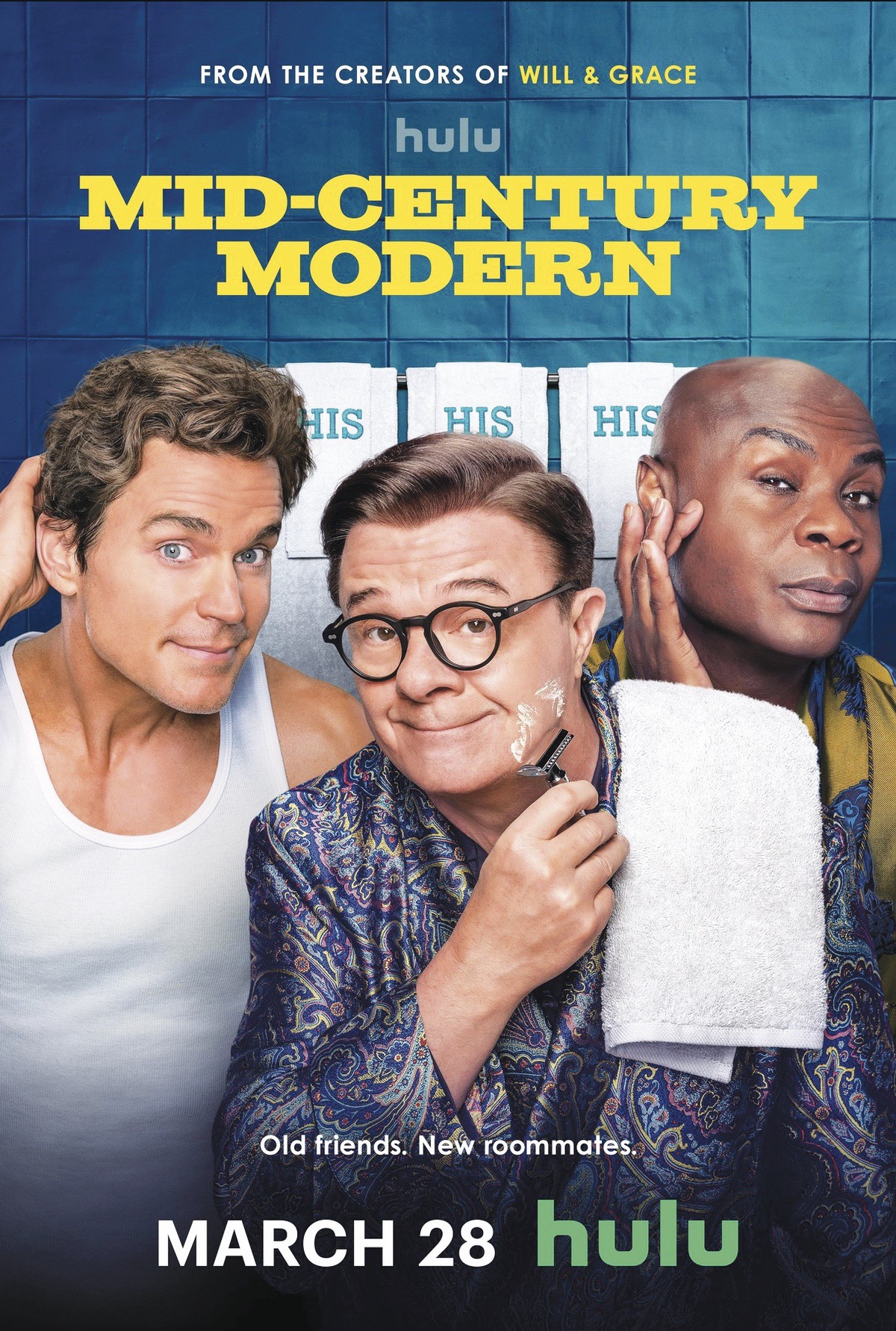As we get our first whiff of summer with eighty degrees (too early I might say), it is hard to determine what the season has in store for us. No Brat Summer this year, unless you count the state of politics. After watching Coachella from the confines of my home, one thing became abundantly clear. Well, besides live entertainment being way too expensive and overrated for what you are paying for at times, that would make it three things. And that last one is that impending humidity will be oppressive. Watching all the concertgoers sweltering in the heat made me think, I bet they wish they had a pool.

Less than a forty-five-minute trip from those fairgrounds lies Palm Springs, California; a place of luxury homes and even more palatial swimming spots. It’s also the location of Hulu’s latest comedy Mid-Century Modern. Created by the people behind Will & Grace, the premise has been billed as the Golden Gays. In the very first episode we meet to Bunny Schneiderman, the owner of a collection of chic lingerie stores passed down to him from his parents. He is rich but lonely, following the death of his roommate and friend George. In the middle of the funeral, introductions to their mutual friends Jerry and Arthur draw us into the dynamic. Full of heart and sass, you can’t help but hear Bea Arthur anytime Nathan Lane opens his mouth. This is especially omnipresent when Matt Bomer’s Jerry goes into his “Saint Olaf” stories about his time as a Mormon. Granted, these do come into play later. But upon face value, the pitch seems to be just that. Director James Burrows shoots this in a multi-camera format as if this was Must-See TV. As I see it, this is just a passible distraction.
Having Bomer play against type is the one thing that does work in the long run. His forte has been dramas, like White Collar and last year’s Fellow Travelers. Despite some fine work there, what has been missing from his filmography was something light; something like this. That dig at him playing a Rose, like Betty White did so eloquently, is not to belittle what he brings to the table. His is the highlight of rather rote material. Lane’s Bunny and Nathan Lee Graham’s Arthur seem, at times, to be competing for who can bring the most snark. One wonders if the latter’s namesake is testament to Bea’s gift of one-liners. Where these two work best is with Sybil, Bunny’s mother. Featured throughout, Linda Lavin had great moments with these two separately in ways both humorous and humane. In the episode titled “Working Girls,” Sybil gets Arthur a job as personal shopper in a high-end boutique catering to wealthy clients and dependent on commissions. As this B-story plays out, we begin to see the potential in this enterprise. Having someone else to play off of besides themselves, Lane and co. display much more chemistry to bounce off of. Yes, there are topics and guest stars throughout the series. But having a grounding fourth character could help in solidifying the group as a whole. From the moment the pilot starts, that theme is woven in seamlessly. Lavin became the obvious choice here, if it wasn’t for tragedy.
Her actual death makes its way into the show, leading to the first season’s finale feeling more like a tribute than a showcase. The addition of Pamela Adlon as Bunny’s sister Mindy presents itself as less authentic, regardless of how baked in her character was. For her to take Linda’s place calls the show into question. Can her looming shadow bring about its demise? Are there any more potential avenues the writers can tackle and still remain fresh? We will have to see if season two is green lit to find out.



